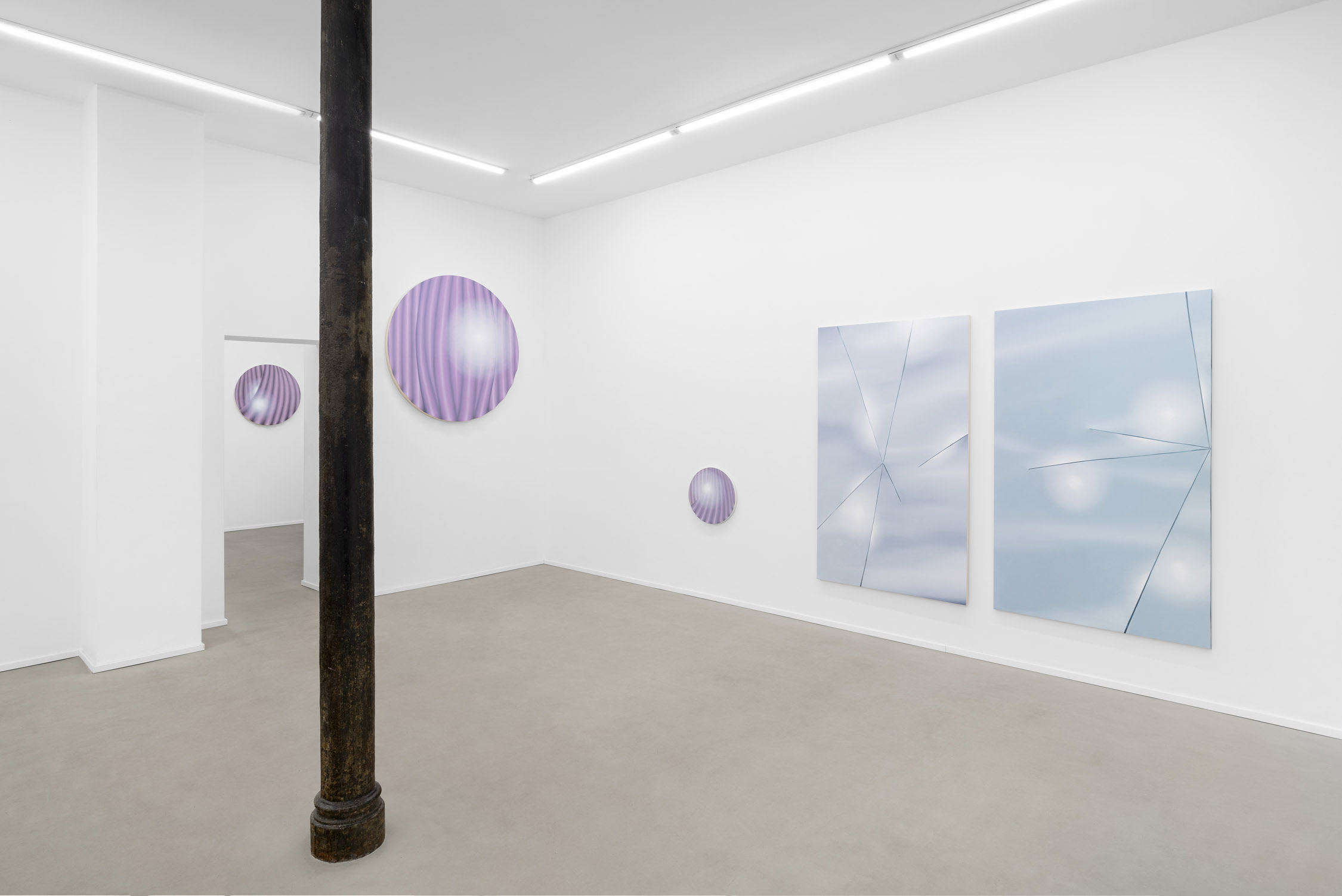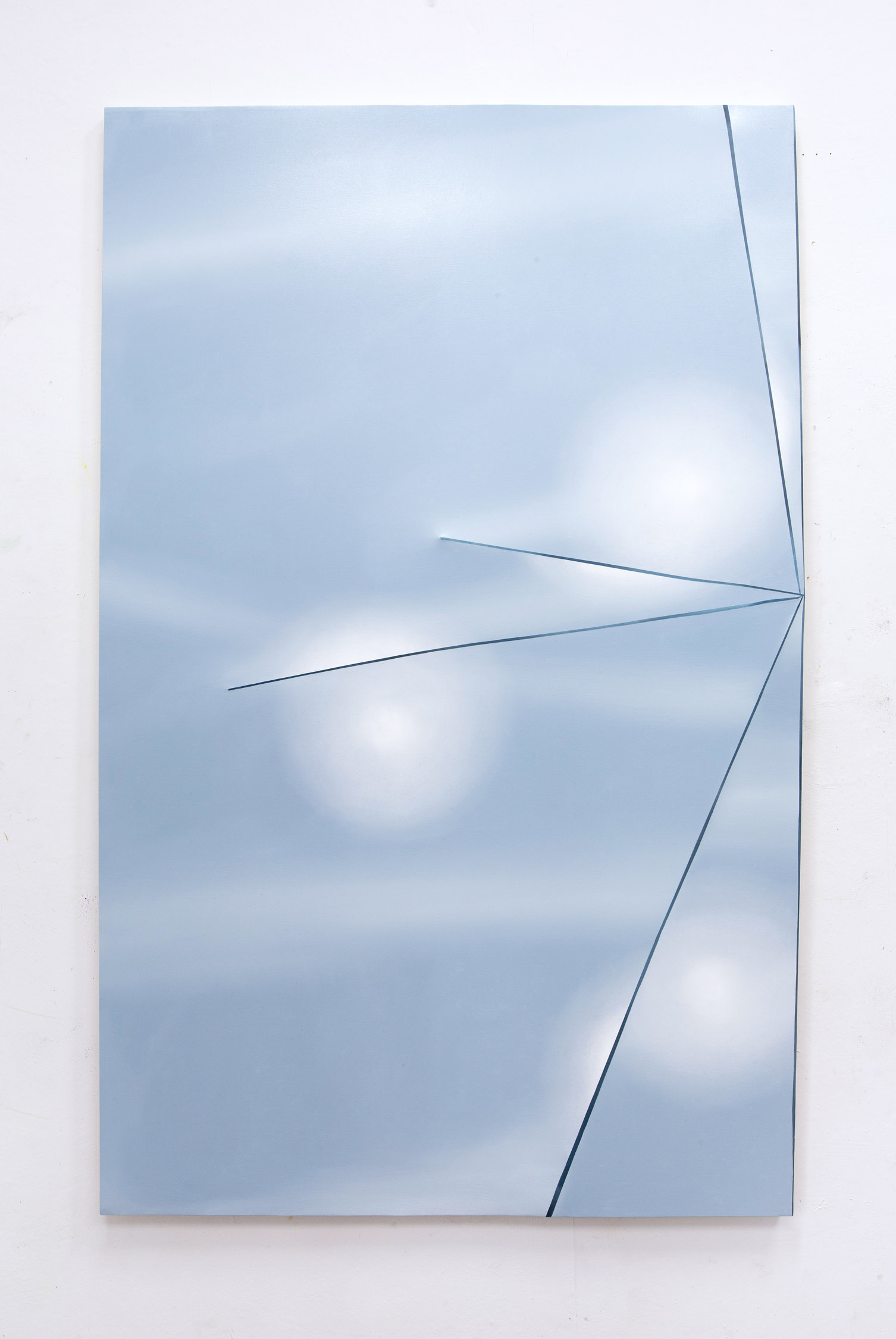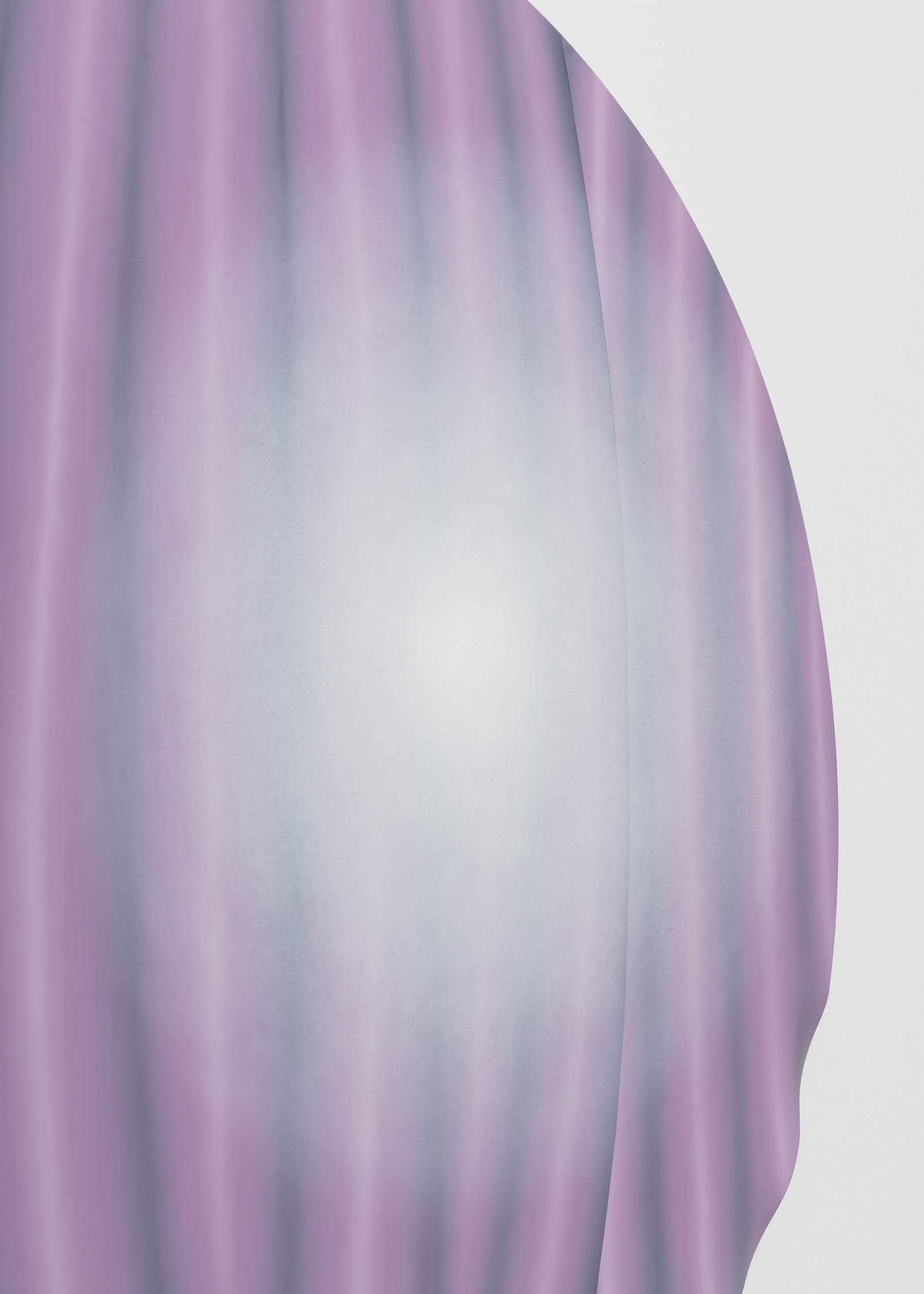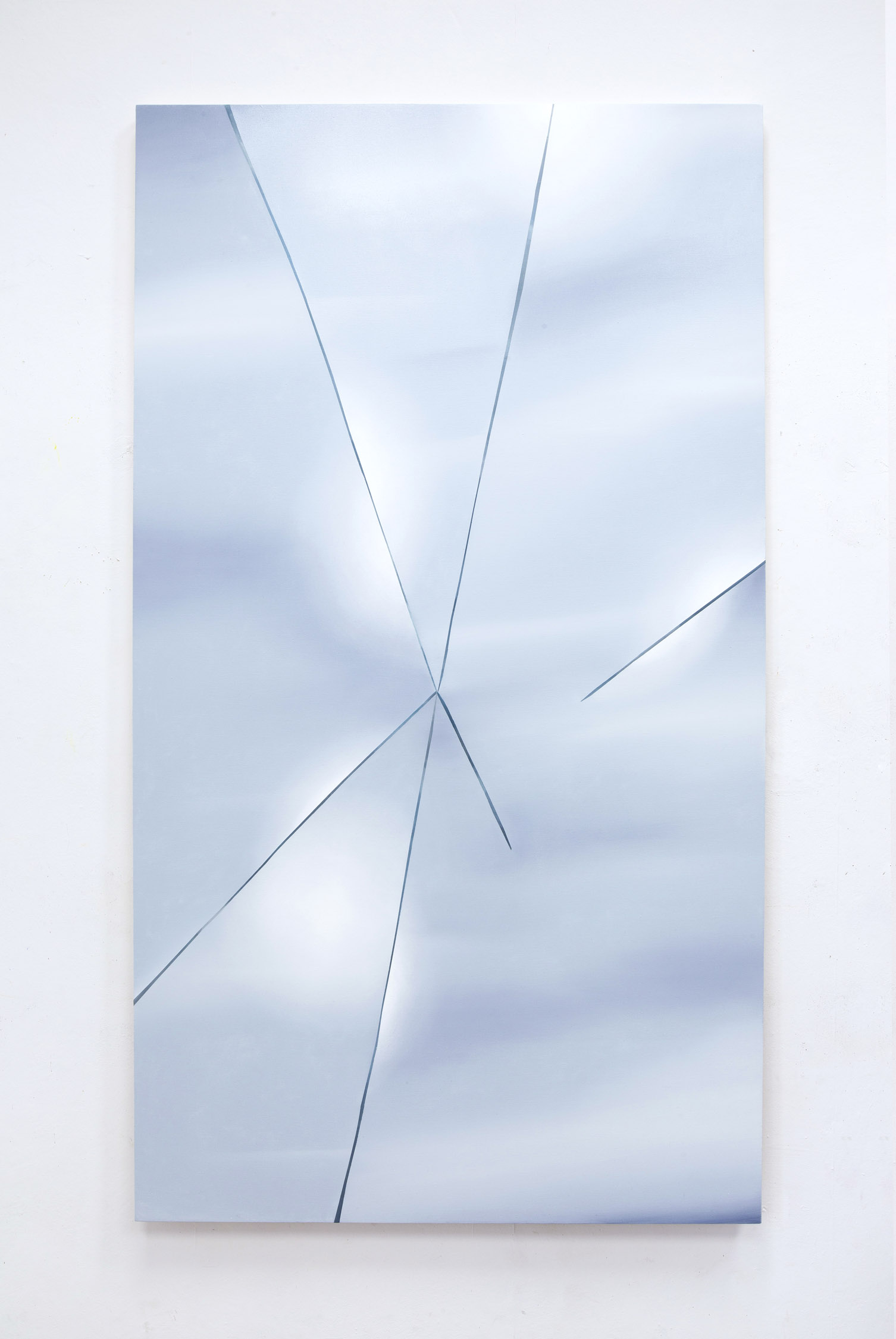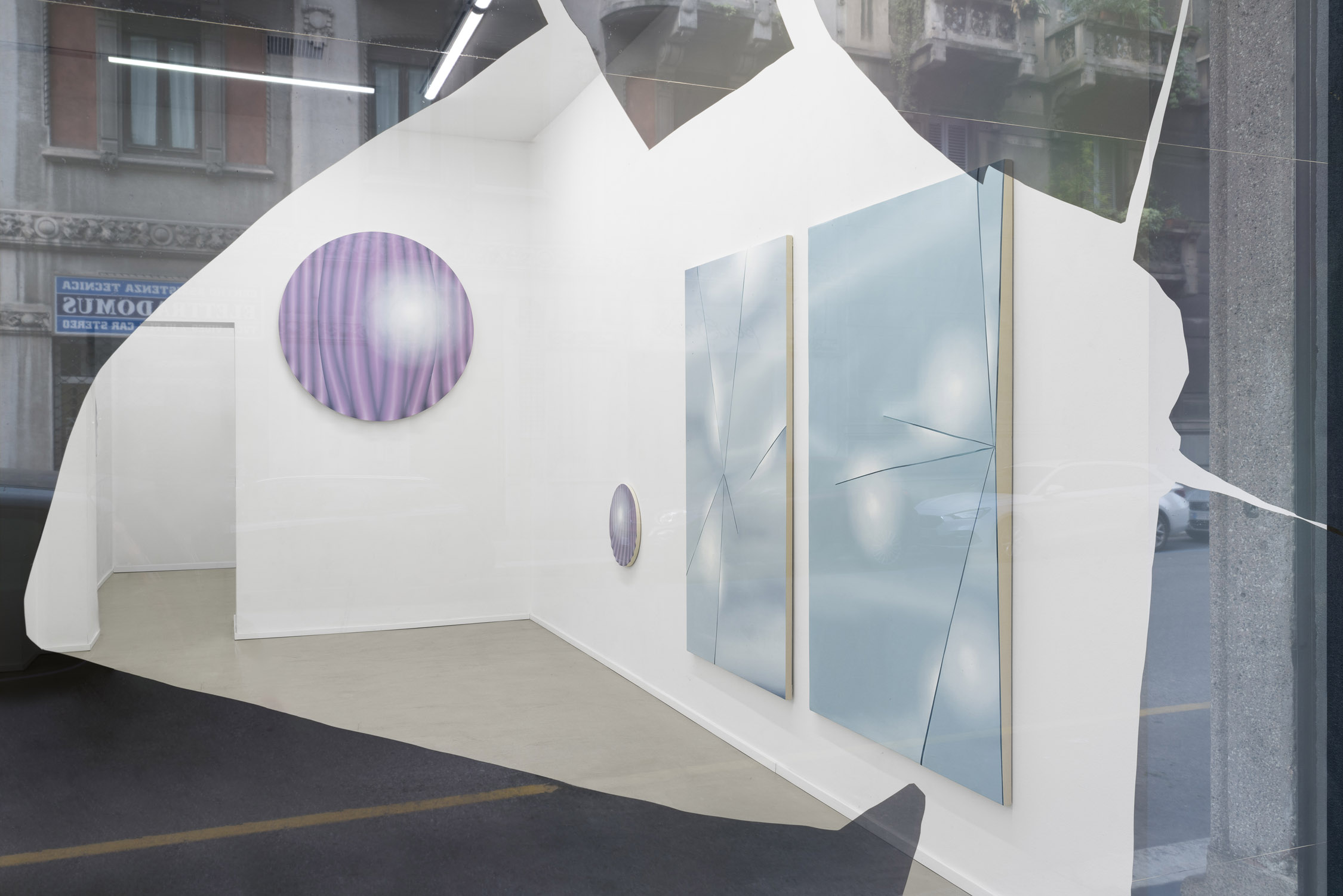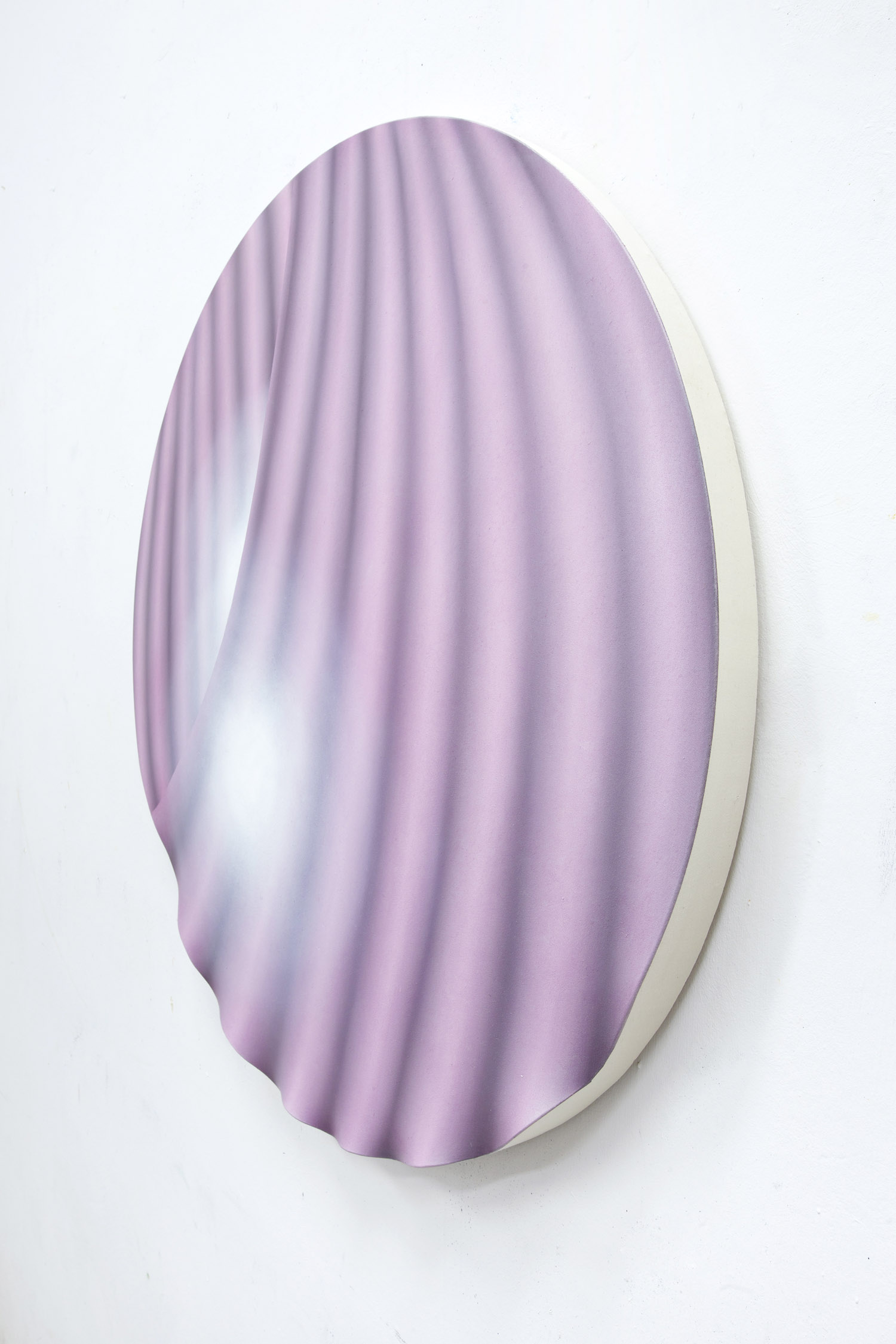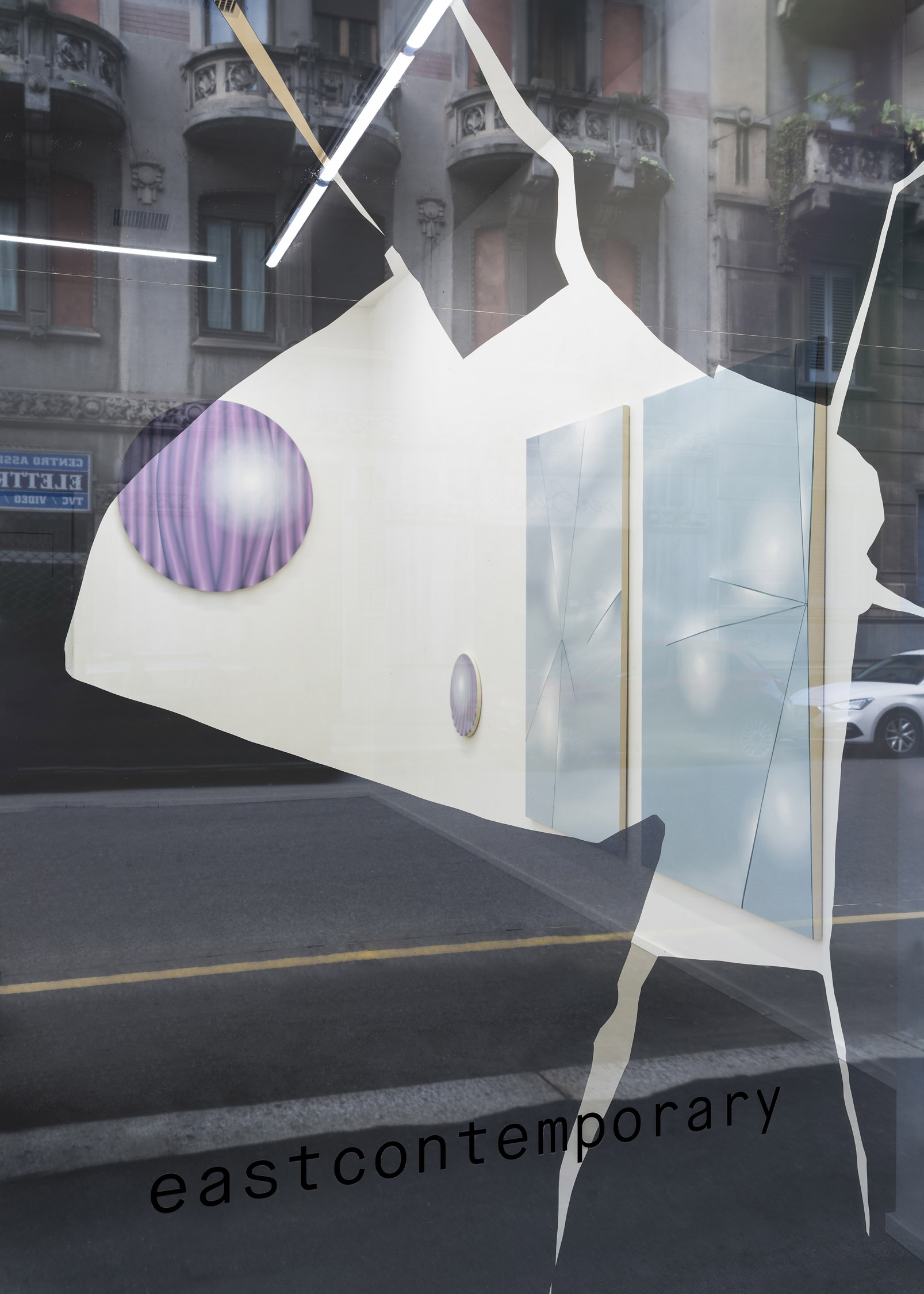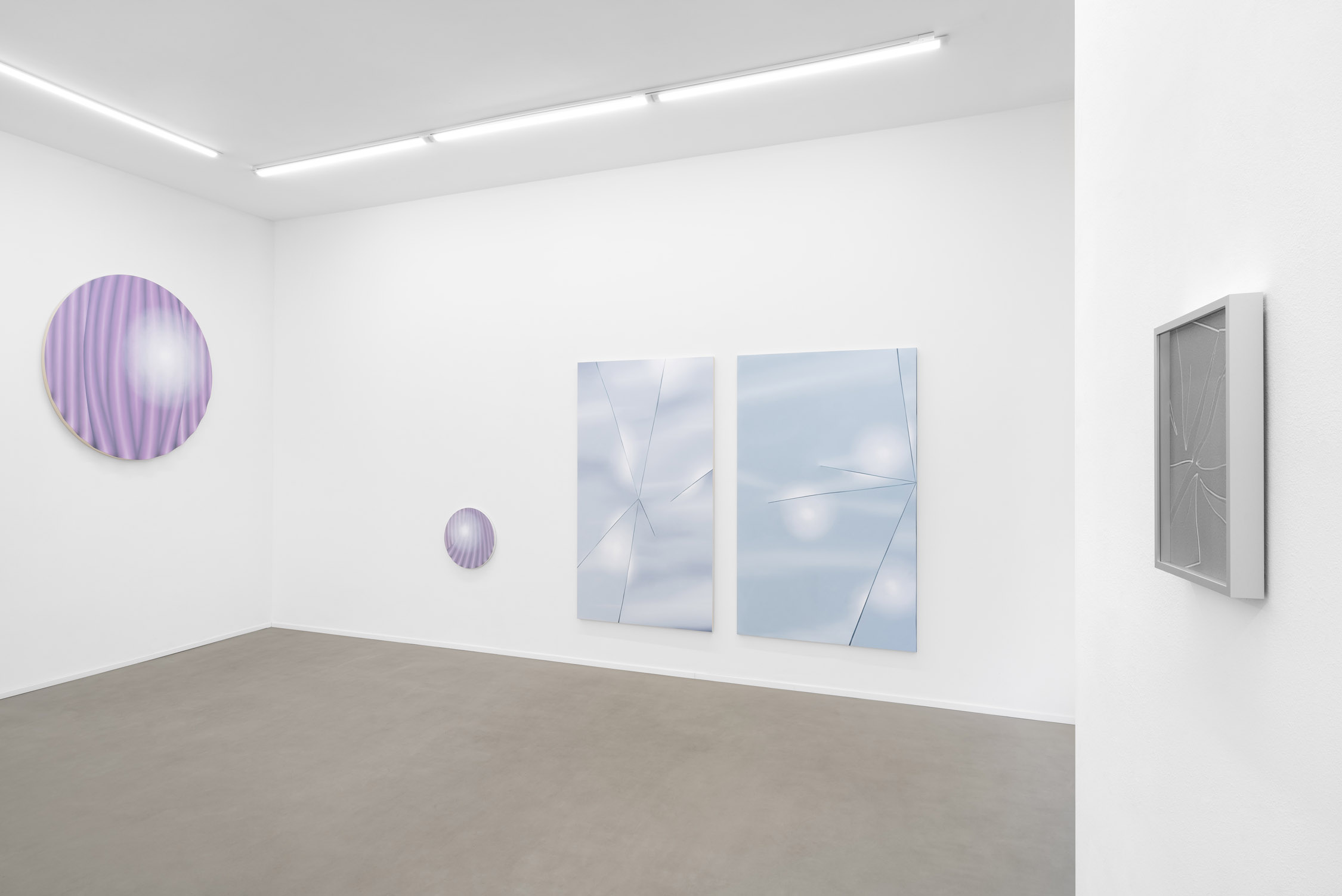Lacan tells an anecdote that takes on from an episode in his early twenties on a boat in the Brittany Sea with local fishermen. It regards a small sardines can floating in the waves, glittering under the sun, and Petit-Jean, this young fisherman accompanying Lacan in this venture, pointing out the distant object in the waves and saying: You see that can? Do you see it? Well, it doesn’t see you.
It is there that Lacan’s reflection on the reciprocity of the seen and the seer takes a turning point, paving the way for a deeper inspection of the power of objects and images of returning the gaze, exerting an agency that escapes our control –– or the sheer visions of geometrical perspective. Just like what happens in Emilia Kina’s practice, that seems to operate an evasion from this abstract way of seeing in as much as linear perspective. If I can see something, that something can see me. This is the premise from which we can start deconstructing our subjectivity.
Although her practice may be well inscribed in painting, I carefully choose not to categorise Emilia Kina’s works solely as that of a painter. Her work stands on the thin line between diverse expressions, intertwining mediums with different elements taken from photography, installation, and architecture, and engaging in an enthralled investigation of the overt and unconscious dynamics that pertain to the visual domain.
Graduating in 2015 from the Jan Matejko Academy of Fine Arts in Krakow, Kina soon focuses on the motif of the curtain. The curtain, depicted as a textile drapery, differently folded, coloured and animated, is a synthesis of concerns about the status of the image. These preoccupations inhabit her works since when Kina’s practice was more relatable to traditional photography, the camera oscura, and studio practices—indirectly siding with theatre and scenography, along with staged photography.
Emilia has hence investigated the curtain’s conceptual and formal implications through diverse solutions and mediums, spanning from “polaroids” to installations, eventually accomplishing sculptural constructions. Works such as Idylla, 2016 [01] demonstrate how the elaboration of the drape motif started from layering strata of blinds and wallpapers, stacking them on the wall or in free space, playing with their physical or painterly qualities.
Following this thread, Kina docked to abstract effects obtained by employing the negatives of photographs and constructing more complex systems of optical trompe l’oeil via the usage of different devices, both in the image and with the image as a physical object, fixing her gaze on small details of staged situations and the everyday, like on empty sockets and plastic electric conduits in a room, as the series dead eye from her graduation year suggests. [02]
In this endeavour, the view, the picture, and the eye become central to Kina’s quest. Their historical and formal addressing, from linear perspective to photography, almost in a rebours route, that coincided with the development of her artistic practice hand in hand with a gradual drying of means, shifted the attention from the object of the artwork to the viewer’s gaze. Kina thus put the emphasis not so much along the lines of an analytical exercise, but rather on a conceptual level that posited the subject and their gaze at the centre of the quest, sliding the discourse from a medium-oriented approach to a broader interrogation of the status and agency of pictures in the present day. [03]
It is significative, in this sense, that Kina’s first curtains were within depicted frames of sills and stages in the foreground, suggesting a certain depth in the construction of the image –– a visual device often used in modern painting to reinforce the geometrical precepts holding an omniscient vision along the lines of linear perspective. It is also significant that the formalisation of the curtain’s motif arrived after an intuition enabled by a process of cancellation, visible, for instance, in works like Untitled, 2015.
This occurred when Kina, in that same year, got fascinated by the power of photography to retain memory yet mislead it. She had over-imposed images of old postcard prints of no longer existing Silesian palaces onto a geometrical backdrop, soon withdrawing the castles out of a frustration caused by the interferences between the picture, the gaze, and its memory. This process somehow reconnected with the visual mechanisms behind Richter’s blurring of photography, revolving around the psychoanalytical and historical functioning of the image itself, ultimately bringing these works to a sort of contradiction. [07]
In fact, there is a sort of «tangible aporia» at stake in these pieces for they operate a rebound of the gaze: the aporia lays in a seesaw between figuration and abstraction, cancellation and construction, absence and presence of the subject.
Such an aporia, which would otherwise prevent the painting from exiting its stylistic impasse, I argue, is ultimately upset by the spotlights Kina casts on the curtains’ surfaces, introducing a further device that opens new possibilities in her work as well as a new strain of production (Spotlight Series, 2020). [08]
Ironically, if that glimmering light in the sea is the first trace of the subject’s deconstruction, another step in Lacanian thought that accompanies the construction and deconstruction of the self is that of the mirror.
In her most recent works, Emilia Kina has stepped into a new phase, introducing the mirror motif. It’s not what the image is about but what the picture activates that is at stake here, calling us as gazing, flash and bones subjects into play, just like a sculpture or an architectural piece in the space would do. Through this quest, Kina’s research takes further on the image as a contingent spatial and dynamic subject, with whom the viewer’s body and gaze is called to interact with.
In an interview from 2017, the artist remembers her fascination for the broad concept of disclosing from sight, historically operated in the arts through different means, including physical barriers, such as a velours or other means, capable of occulting the gaze and constraining the gaze to peep.
Leonardo Da Vinci famously wrote: Non is coprire se llibertà / t’è cara ché ’l volto mio / è charciere d’amore [Do not unveil me if freedom is dear to you, for my face is the prison of love].
In the age of information, what do pictures may want is us to contemplate their desire, and in doing so, observing ourselves.
-Giulia Pollicita
Emilia Kina (b. 1990, Poland) lives and works in Cracow.
Emilia Kina graduated from the Faculty of Painting at the Jan Matejko Academy of Fine Arts in Cracow, Poland. She is interested in the materiality of the image, a simple form arising from complex problems, where the essence lies in the relations between painting as an image and painting as an object. Recalling screens, curtains and blinds, which like a room divider conceal the view, her works play by intertwining various sensory and interpretive layers.
Kina has recently staged her solo exhibitions at Raster Gallery in Warsaw, eastcontemporary in Milan and the Grey House Gallery in Cracow. She has participated in group exhibitions at Eve Leibe Gallery in London, Stefan Gierowski Foundation in Warsaw and Kristin Hjellegjerde Gallery in London, among many others. Her works were recently exhibited at international art fairs such as Artissima in Turin, NADA in Miami or Felix Art Fair in Los Angeles.
